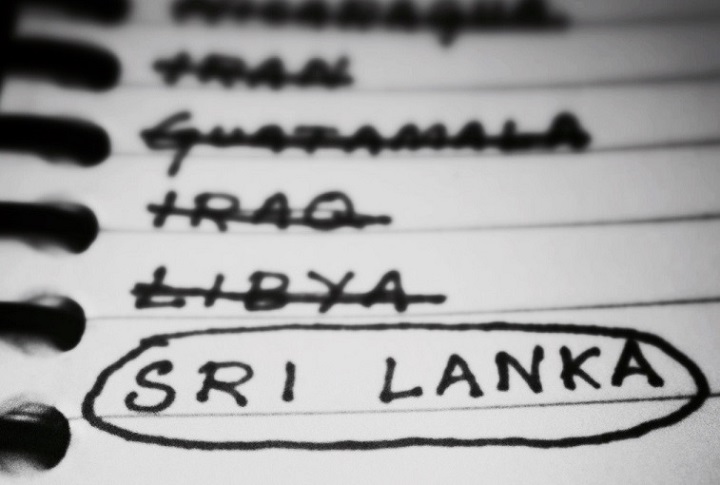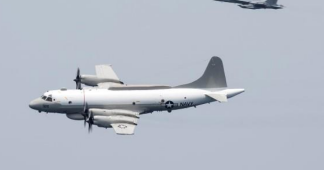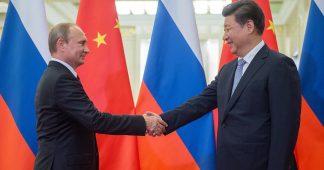indiatoday.intoday.in
After prolonged negotiations and deliberations, Sri Lanka today signed a USD 1.1 billion
After prolonged negotiations and deliberations, Sri Lanka today signed a USD 1.1 billion deal with China to lease its Hambantota port to India’s northern neighbour.
The deal was signed days after Sri Lanka assured India that the Hambantota port would not be used by China for military use and the Chinese activities would be only commercial.
To allay India’s concerns, Sri Lanka re-drafted the agreement to have more say at the Hambantota port. The amended deal was today signed in Colombo after delay of several months and protests by various groups in Sri Lanka.
SIGNIFICANCE OF HAMBANTOTA PORT
Hambantota port is located on the southwestern coast of Sri Lanka overlooking the Indian Ocean and falls on the route connecting Southeast Asia with Africa and West Asia. China has been keen on acquiring this port for several years.
After deal was signed between the Sri Lanka Ports Authority (SLPA) and the China Merchant Port Holdings, Sri Lankan Prime Minister Ranil Wikremesinghe said, “We are giving the country a better deal without debt.”
Sri Lanka built this port with an investment of USD 286 million worsening its debt figures. But, the port did not attract much international traffic. The money from the deal will help Sri Lanka repay foreign loans.
For China, Hambantota port forms an important link in its One Belt, One Road (OBOR) initiative. China calls OBOR the new Silk Route linking important ports and cities between China and Europe.
MILITARY USE NOT ALLOWED
China had been keen on developing Hambantota port into one of its naval bases in the Indian Ocean. It recently opened a military base at Djibouti in the Gulf of Aden of the Indian Ocean.
But, India conveyed security concerns to Sri Lanka on more than one occasion with regard to Chinese military presence at Hambantota. In return, Sri Lanka assured India that the port would not be allowed to be used by Chinese military.
The military use remained a sticky point during negotiations between Sri Lanka and China. This led to delay in signing the deal by several months. The deal terms were revised and under the new pact, Chinese stake is limited to 70 per cent and for commercial purposes only.
WHY HAMBANTOTA?
Hambantota port pact with China has come as a compulsion for Sri Lanka, which is facing a serious debt crisis. In the aftermath of the civil war that ended in 2009 after the killing of LTTE chief Velupillai Prabhakaran, Sri Lanka borrowed billions of dollars from China for reconstruction.
With the borrowed money, Sri Lanka built roads, ports including Hambantota and airports in an attempt to give a fresh boost to its economy. But, the return has come at the rate, the island nation expected and now it is facing huge difficulty in repaying debts (USD 8 billion despite an IMF bailout) to China.
This struggle of Sri Lanka gave China an opportunity to replicate the template it has used in Myanmar and Pakistan. In both Myanmar and Pakistan, China is developing ports for both commercial and military purposes. Hambantota port deal has come as an extension of what is being termed as China’s “debt-trap diplomacy.”
However, unlike Myanmar and Pakistan, Sri Lankan government has categorically said that its navy will be the sole in-charge of security at the Hambantota port. No foreign naval force will be allowed to use it as a base, Sri Lankan government has said.
SHOULD INDIA WORRY?
Ever since China set its eyes on Hambantota port, India has been keeping a close watch on the developments between China and Sri Lanka. Hambantota port gives China a vantage position to keep an eye on India’s maritime activities – commercial as well as strategic.
Any change in the status quo in the Indian Ocean is bound to alter the security concern for India. And, if the change occurs due to Chinese presence, India cannot afford to look the other way. In 2014, when China docked its submarines at Hambantota, India raised the issue with Sri Lanka.
The constant talks between Sri Lanka and India at various levels have helped the two countries understand one-another’s concerns. In May this year, when China wanted to dock its submarine once again at Hambantota port, Sri Lanka turned down the request.
With Sri Lanka and India staying on the same page on the issue of security, there is not much for New Delhi to worry about. But, with increasing Chinese presence in the Indian Ocean – at Gwadar, on the Horn of Africa, at Cocos Keeling and at Chittagong, India can hardly take the development lightly. China is known to change the rules of the game when favourable time comes.











